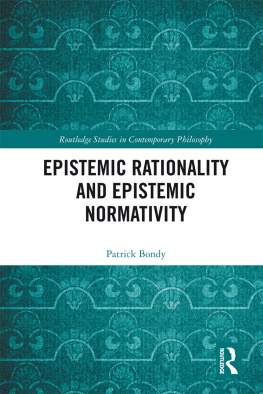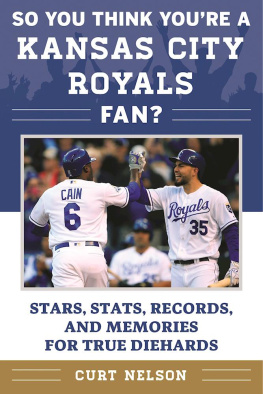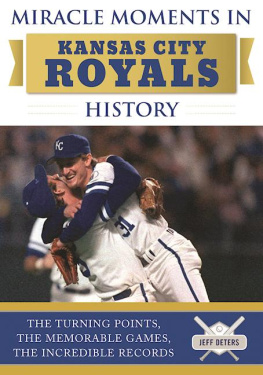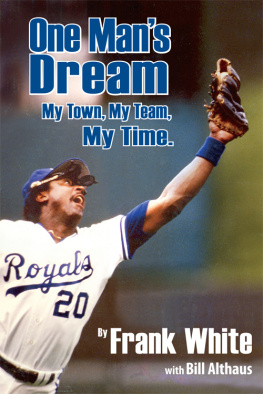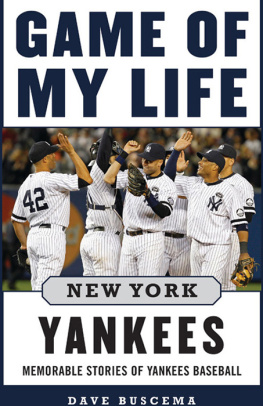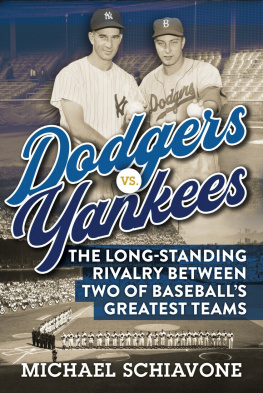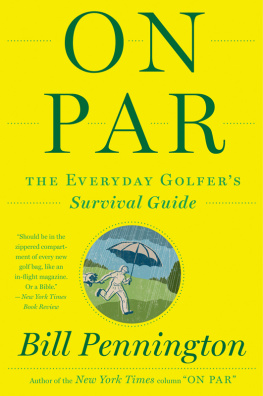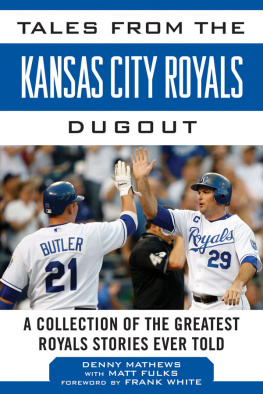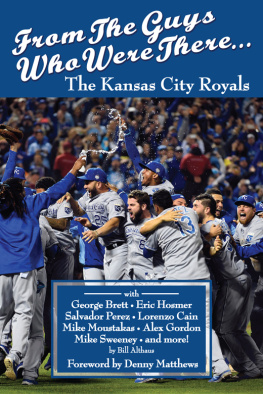Thank you for downloading this Scribner eBook.
Join our mailing list and get updates on new releases, deals, bonus content and other great books from Scribner and Simon & Schuster.
C LICK H ERE T O S IGN U P
or visit us online to sign up at
eBookNews.SimonandSchuster.com
We hope you enjoyed reading this Scribner eBook.
Join our mailing list and get updates on new releases, deals, bonus content and other great books from Scribner and Simon & Schuster.
C LICK H ERE T O S IGN U P
or visit us online to sign up at
eBookNews.SimonandSchuster.com
Praise for
THE PINE TAR GAME
In his smart, whimsical New York Daily News columns, Filip Bondy has long projected a big-city voice along with a healthy appreciation and sympathy for small-market challengers. He does it again in The Pine Tar Game , with a richly reported and written account of the Yankees-Royals rivalry that gave us memorable characters and zany circumstances. Bondy was there. With his book, you will be, too.
Harvey Araton, New York Times bestselling author of Driving Mr. Yogi
The teenage Yankee fan inside of me is still angry at Lee MacPhail for upholding Kansas Citys protest and wiping out perhaps the most bizarre ruling in baseball history. None of us who watched live will ever forget the sight of George Brett making like Jack Nicholson in The Shining as he charged from the dugout, and none of you who read this book will ever forget how the great Filip Bondy, the perfect chronicler of this imperfect moment, brought a wild and crazy Yankee Stadium day back to life.
Ian OConnor, New York Times bestselling author of The Captain: The Journey of Derek Jeter
Masterfully offers context and a history of the Yankees-Royals complicated sports rivalry... [the book] is worthy for devoted professional baseball fans and for its artfulness in creating a narrative focused primarily on just one pitch.
Kirkus Reviews
ALSO BY FILIP BONDY
Whos on Worst?
The Lousiest Players, Biggest Cheaters, Saddest Goats and Other Antiheroes in Baseball History
Tip-Off:
How the 1984 NBA Draft Changed Basketball Forever
Chasing the Game:
America and the Quest for the World Cup

Scribner
An Imprint of Simon & Schuster, Inc.
1230 Avenue of the Americas
New York, NY 10020
www.SimonandSchuster.com
Copyright 2015 by Filip Bondy
All rights reserved, including the right to reproduce this book or portions thereof in any form whatsoever. For information, address Scribner Subsidiary Rights Department, 1230 Avenue of the Americas, New York, NY 10020.
First Scribner hardcover edition July 2015
SCRIBNER and design are registered trademarks of The Gale Group, Inc., used under license by Simon & Schuster, Inc., the publisher of this work.
For information about special discounts for bulk purchases, please contact Simon & Schuster Special Sales at 1-866-506-1949 or .
The Simon & Schuster Speakers Bureau can bring authors to your live event. For more information or to book an event, contact the Simon & Schuster Speakers Bureau at 1-866-248-3049 or visit our website at www.simonspeakers.com.
Jacket design by Gregg Kulick
Jacket photographs: Front Rich Pilling/Getty Images Sport Classic/Getty Images; Back B Bennett/Getty Images Sport Classic/Getty Images
Library of Congress Cataloging-in-Publication Data
Bondy, Filip.
The Pine Tar Game : the Kansas City Royals, the New York Yankees, and baseballs most absurd and entertaining controversy / Filip Bondy.First Scribner hardcover edition.
pages cm
1. Pine Tar Game, New York, N.Y., 1983. 2. Kansas City Royals (Baseball team)History20th century. 3. New York Yankees (Baseball team)History20th century. 4. BaseballNew York (State)New YorkHistory20th century. 5. Baseball rulesHistory. I. Title.
GV863.N72N48 2015
796.35709747'1dc232014049797
ISBN 978-1-4767-7717-7
ISBN 978-1-4767-7719-1 (ebook)
To the late, great Eugene Hancock, father-in-law and baseball fan
Contents
Introduction
T he story begins, as all the best ones do, with a bat and a ball. The tale is layered with rules, with politics, with tantrums, with a David and Goliath rivalry, with judicial procedures, with Roy Cohn working for one side and Rush Limbaugh for the other, with deep, lasting friendships and with strong, quirky ballpark personalities. But the saga of the Pine Tar Game centers on a Hillerich & Bradsby model T (for Marv Throneberry)85 Louisville Slugger, 341/2 inches long, 32 ounces in weight. Some players, as Pete Rose once did, constantly fiddle with bats during their careers, changing models, lengths, and weights as often as they do their socks. They create hybrid models, mutants. Others, like Derek Jeter, retain the same design and weight for every game they play. Jeter swung the P72 Louisville Slugger for 20 years with the Yankees. The T85 was George Bretts model and the pine tar bat was his favorite T85, ever. The bat now rests inside a glass display case in Cooperstown. Some of the pine tar has been scraped off, or worn off. Look closely and youll see a red line where that nasty stuff once rose to a level deemed sinful by the umpires, until it wasnt.
The bat was a small botanical miracle, just seven grains of ash. You look at these grains now, maybe, a good bat might be a 10-, 11-, 12-grainer, a normal bat would be 13, 14, 15 grains going through it, George Brett says. But this one had seven, which meant it was really, really hard. Brett had a contact at Hillerich & Bradsby, a fellow he knew only as Tiny. Tiny would look out for the Kansas City Royals third baseman, search the lumber for the very best stock. He manufactured this bat for Brett, and then Tiny marked red stars on top of the knots, which highlighted the hardest parts of the wood. This Louisville Slugger would not snap or splinter easily, not like those maple toothpicks that shatter today at the first sight of a cut fastball.
In 1983, almost all the bats were still Louisville Sluggers, made from ash trees. Since then, an epidemic of emerald ash borersan Asian beetle invasionhas hurt the stock. Besides, a lot of ballplayers simply decided they preferred maple, which is a heavier, harder, smoother wood with thinner grains; or even birch wood, a compromise material. Nathan Stalvey, curator at the Louisville Slugger factory and museum, estimates that the percent of ash bats used in the major leagues has dipped in the past few decades from about 95 percent to 40 percent. Hillerich & Bradsbys share of the market has also slipped substantially, because of globalization and player endorsements. The Louisville company that once held a monopoly on bats must now share the market with 32 other manufacturers, including Rawlings, Mizuno, Old Hickory, Trinity, and Chandler. Only about 30 percent of the bats in major league games are now produced by Hillerich & Bradsby. Brett kept his own precious bat unvarnished, raw. I just liked the way it felt, liked the way it looked, he says. Plain, tempered, raw ash, that came out real white. But plain only went so far. He kept applying more of a sticky hydrocarbon substance, made from the stumps of pine trees, for a better grip. He was one of the few players then or now who never wore batting gloves, preferring bare hands on raw bat. Brett was also one of only a few hitters to use so much pine tar. Great batters like Pete Rose and Ted Williams preferred their bats much tidier. Both would douse their bats daily in wood alcohol. Brett was a bat slob, and is the first to admit it. What happens in my case is the pine tar gets in the grain and starts growing inside, Brett says. Its not just caked on the bat, its kind of growing inside the grain. As a result of using a bat for three or four weeks and putting pine tar on three, four times a day, its gonna get pretty ugly. And the bat was pretty ugly. But it was still working.
Next page

